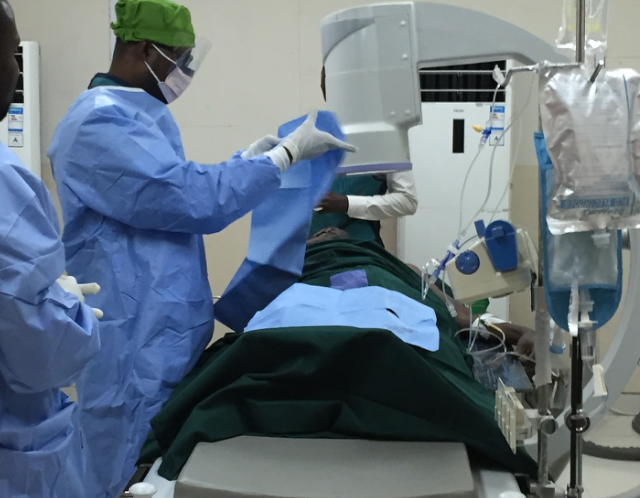
Interventional radiology treatments are minimally invasive and image guided procedures that do not involve the cutting of the body. It offers less risk; less pain and less recovery time compared to conventional surgical operation and is fast becoming the order of the day.
However, Dr Benjamin Dabo Sarkodie, the only Ghanaian Endovascular and Interventional Radiologist who is on a mission to educate and engage the public about these procedures said knowledge about the procedure was still low in the country with some doctors not even knowing about it, he added that a lot of awareness needs to be created about it.
“Interventional radiology treatments are now first-line care for a wide variety of conditions and it has become important that patients and the public become aware of these life-saving and life changing options,” he said.
Ghana and the world as a whole have lost some of its human resource due to unavailability of such procedures in the past. Some have even lost their limbs to diabetic related issues because amputating their legs was the only option available and patients and their families have had to live with the pain.
He added that when people get to know about the options available to them they would intend make informed decisions.
Explaining the procedure, he said “All we need is minimal invasive, meaning we use a small hole or cut under image guidance. With the small incision we are able to do a lot of work under image guidance.

“In the past people who have diabetes and have certain wounds or non healing ulcers on their legs had their legs amputated or chopped off surgically to save their lives but with interventional Radiology we can open up some vessels to restore blood flow and save their limbs.”
“Women with blocked fallopian tubes and cannot give birth we are able to open the tubes up and increase their chances of getting pregnant.”
Dr Sarkodie said the advantages of interventional radiology was that patients get shorter stay in the hospital, in some cases patients can go home immediately after some of the procedures, “An example is that someone with a fibroid can be treated and can be at work in three days time without cuts or scars. I must add that there is a wide array of things that can be done with interventional radiology.”
“Even though we cannot prevent people from dying we can at least increase their live span and improve their quality of life.”
As part of efforts to create awareness in the country, Dr Sarkodie said the Ghana Society of Interventional Radiology throughout the year have been educating doctors at various levels, having faculty and department meetings on the procedures to let them know how they can help patients better.
The Society would also be having a one-day conference in August with partners from Mayo clinic to sensitise medical practitioners and the general public on the role Interventional radiology.
He said it was important for doctors to know about the procedure, adding that when that happens they could tell their patients how the procedure could help them.
Dr Sarkodie says government can help by getting more people to train in interventional radiology, and get more equipment because they do not have all the necessary equipment at the moment. He said fortunately, some new equipment have been installed at the Cardio Centre at the Korle-Bu Teaching Hospital and the new University of Ghana Hospital.
Interventional Radiology (IR), also known as vascular and interventional radiology (VIR) or surgical radiology is an independent medical specialty, which is a sub-specialty of radiology until recently that uses minimally invasive image-guided procedures like; X-rays, MRI, CT, ultrasound, and other imaging modalities to diagnose and treat diseases in nearly every organ system.
Dr Sarkodie who is also a lecturer at the University of Ghana School of Medicine and Dentistry has been performing these procedures for patients in Ghana for the past two years.
With these procedures, he has been able to save the limbs of people who would have had their legs amputated, treated women with blocked tubes who are now pregnant, and treated people with liver cancers.
Submitted

